A Glimpse into the Past
In the heart of Richmond, Virginia, stands a structure that defies time and space—the Egyptian Building. Erected in 1845, this building was the cornerstone for medical education as the first permanent home of the Medical Department of Hampden-Sydney College.
Over the years, it transitioned into the Medical College of Virginia and is now a part of Virginia Commonwealth University.
The building’s inception was a community endeavor, a testament to the collective spirit of Richmond and Virginia. Financial backing came from multiple sources, including a significant loan from the Commonwealth of Virginia and a generous donation from the city of Richmond. This pooling of resources set the stage for what would become an architectural and historical landmark.
The responsibility of designing this monumental structure fell on Thomas Somerville Stewart, a Philadelphia architect known for his eclectic style. Stewart chose the Egyptian Revival style, which was more than an aesthetic choice. The style was seen as a nod to the ancient Egyptian roots of medicine, a tribute to the civilization that gave the world its first known physician, Imhotep.
The Building that Speaks
The Egyptian Building is not just a structure; it’s a narrative carved in stone and mortar. Its unique architectural elements tell a story, each more fascinating than the last. The walls, for instance, are designed to be thicker at the base and taper off towards the top.
This design creates an optical illusion, making the building appear solid and towering, a fortress that stands tall against the ravages of time.
Windows in historic buildings often serve as eyes into the structure’s soul, and the Egyptian Building is no exception. The windows are diamond-paned and minimalistic, a design choice that adds mystery to the building. These windows are not just architectural elements but narrative devices contributing to the building’s enigmatic persona.
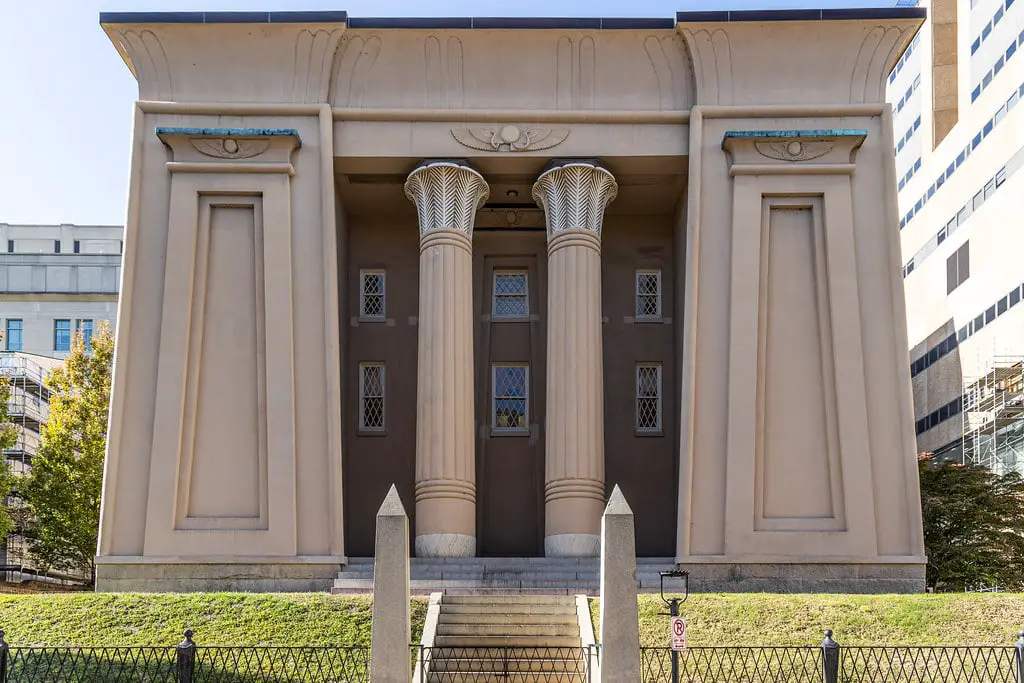
Columns are often the unsung heroes of grand structures, providing both support and aesthetic appeal. The Egyptian Building boasts monumental columns intricately designed with palm frond capitals at each end.
These columns serve a dual purpose—they are both functional and symbolic, representing bundles of reeds, a common sight along the banks of the Nile River in Egypt.
Egyptian Building: Inside the Enigma
Walking into the Egyptian Building is like stepping into a world of symbols and metaphors. The interior is adorned with various elements that add meaning to its architectural brilliance.
One of the most striking features is the Winged sun disk, a symbol representing Horus, the falcon-headed god of Egyptian mythology. This symbol is often accompanied by snake-form goddesses Bekbet and Uaset, adding a layer of complexity to the interior design.
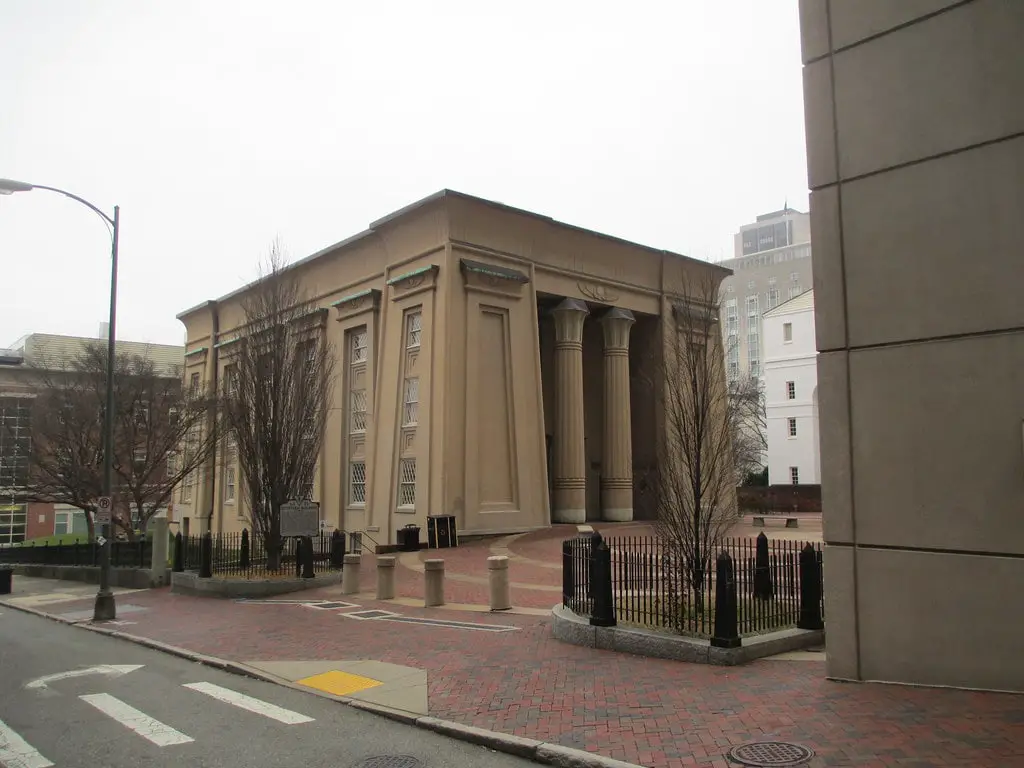
Color plays a significant role in the building’s interior, each hue carefully chosen for its symbolic value. The color red, for instance, is used to signify divine love, while blue represents divine intelligence.
Golden yellow, another prominent color, stands for divine mercy. These colors are not randomly chosen; they are part of a carefully curated palette that adds depth and meaning to the building’s interior.
Hieroglyphs and other Egyptian symbols are shared, each serving a specific purpose. The floor tiles, for example, feature a giant scarab beetle, a symbol of transformation and rebirth in Egyptian mythology. These elements make the Egyptian Building more than just a structure; it’s a treasure trove of symbols and meanings, each waiting to be discovered and interpreted.
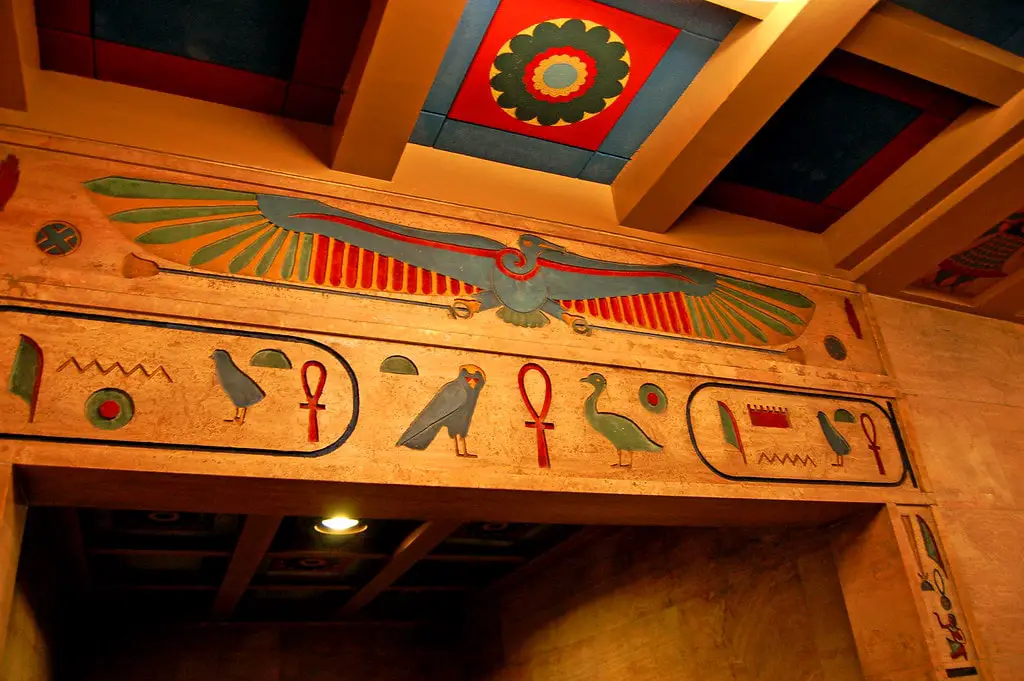
Evolving Through Time
The Egyptian Building has seen significant changes over the years, each adding a new chapter to its rich history. One of the most noteworthy changes was the renovation in 1939, carried out to modernize the building while retaining its Egyptian theme.
This renovation was influenced by the global fascination with Egypt that followed the discovery of King Tutankhamun’s tomb in 1922.
Over the years, the building has served various educational purposes, becoming a cornerstone of academic life in Richmond. It has housed different schools within the Medical College at other times, making it a versatile and invaluable asset to the academic community.
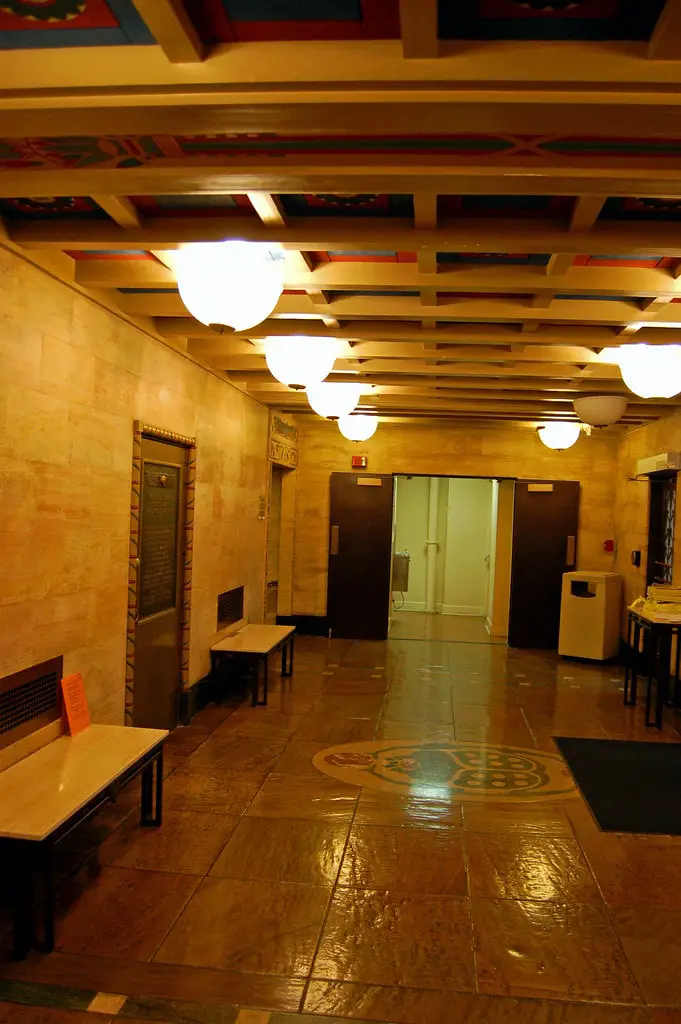
More Than Just Bricks and Mortar
The Egyptian Building transcends its physical form to become a living symbol of Richmond’s academic and cultural heritage. It’s a point of pride for the Medical College of Virginia and a prominent feature of the Virginia Commonwealth University seal.
It is a repository of tradition, a physical manifestation of the city’s intellectual spirit, and a testament to the community’s collective memory.
In Conclusion
While the Egyptian Building is steeped in history, it’s not stuck in the past. It continues to be a subject of architectural studies and historical tours, proving it’s a living monument with much to offer. It’s not just a relic of the past but a living, breathing entity that continues to inspire and educate.
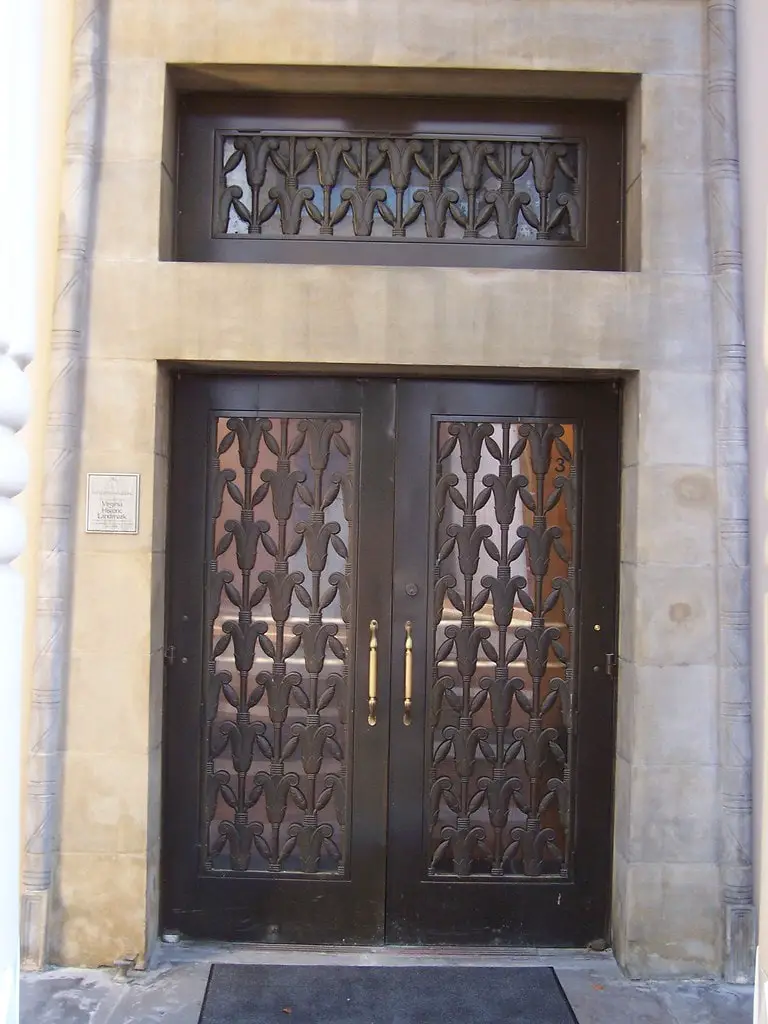
For those who call Richmond home, the Egyptian Building is more than just a historic site; it’s a part of their collective memory and cultural identity. It is a testament to the city’s rich history, a monument that continues to captivate and inspire.
